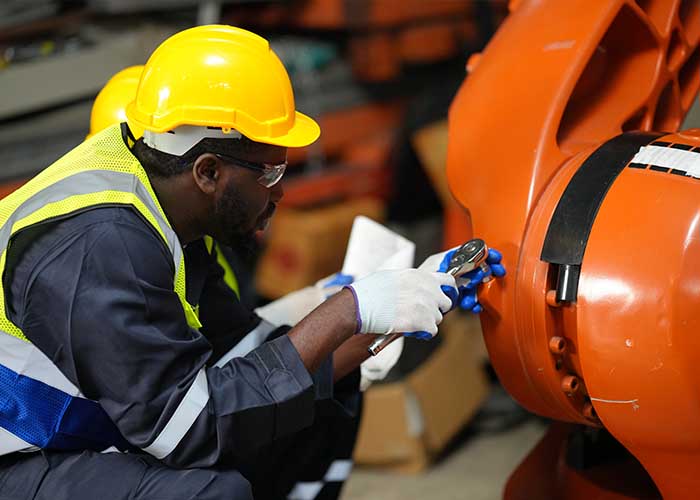Every piece of equipment has a critical role to play in the safe and efficient operation of your business. If you’re not maintaining your equipment properly, eventually it will start to fail.
The friction created between the pulley lagging and the belt is one of the most important factors when choosing the right lagging for your project, but there are many other things to consider.
In order to understand how pulley lagging helps improve safety and efficiency, it’s important that you first understand what pulleys are used for. Pulleys are used in many different industries including mining, construction, manufacturing and more! They’re also used in almost every type of machinery from cars to airplanes.
What is Pulley Lagging?
Pulley lagging is very important in a belt conveyor system. pulley lagging is the layer of material that is bonded to the shell of a conveyor pulley. Its function is to protect the shell from damage, increase friction with the conveyor belt and dispense water off the pulley. It determines the traction of a belt conveyor system. Pulley lagging helps to increases productivity and reduces the cost of maintenance.
With a pulley lagging system, your pulley and conveyor belt remain in contact at all times. This increases friction and prevents the belt from slipping. Without it, you are rapidly ruining your belt, especially at high rotation speeds.
Pulley lagging may be required for several reasons:
* Service applications (e.g. cement plants) that have high abrasion requirements for their conveyor belts
* High slippage occurring between belt and pulley, especially in wet conditions
* Improving productivity by increasing friction between the pulley and belt
* Improving safety by increasing friction, reducing risk of sliding.
* Increasing tracking performance of belting by providing adequate crowning on head pulleys.
* Increasing reliability of conveyor systems by reducing maintenance costs.
When assessing whether or not your equipment requires pulley lagging, you should consider the following questions:
What is the condition of the conveyor?
What type of load are you handling?
How often does slippage occur?
Are there any maintenance issues related to this equipment?
What kind of environment will this equipment be operating in?
Things you should know before selecting your pulley system
- Operating condition
- The abrasiveness of the material being processed
- Belt type and belt running speed
- Type of pulley being used
Operating condition
When considering which pulley lagging to use, operating temperature, wet or dry conditions, and chemical contact all play an important part in the decision-making process.
The abrasiveness of the material being processed
When it comes to what type of lagging material you should use, the abrasiveness of a product is an important consideration. It is important to note that the abrasiveness of the material on the belt is crucial to determine the best type of pulley lagging to use. This is due to the different belting requirements based on the materials processed. Different types of belting affect the type of pulley lagging to be used.
Belt type and belt running speed
The belt type and the belt running speed play a very important role when it comes to pulley lagging. the lagging should always take second place to the belt. Belts are very costly to replace when compared to the lagging. Therefore, if one of them were to wear out first, it would be more cost-effective for it to be the pulley lagging.
Type of Pulley being used
There are two different kinds of pulleys – Drive pulleys and non-drive pulleys.
Drive pulleys are primarily responsible for driving the belt around the conveyor, whereas the non-drive pulleys redirect the belt. This means that More grip is required by a drive pulley than on non-drive pulleys.
While many conveyor maintenance personnel choose a lagging based on cost, this may not be the best solution. The wrong choice can lead to premature failure, increased downtime, damaged equipment, and lost productivity. A better way to select your pulley lagging is to consider its effect on five key performance factors:
– Friction
– Traction
– Pulley wear
– Belt wear
– Energy consumption
Contact CaTS for the right choice.








